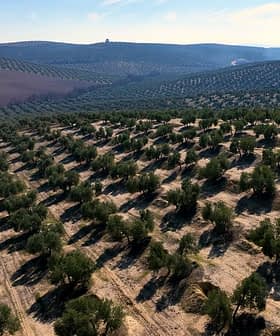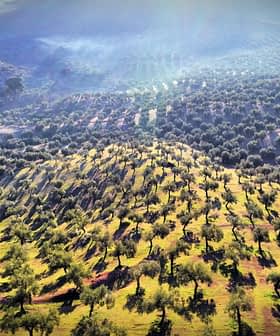Olive Oil Production Expected to Decrease Significantly in Spain
Estimates from a coalition of olive oil producing cooperatives estimate that this year's harvest may be the lowest since the 2014/15 season.
Spain’s total olive oil production is expected to decrease by 44 percent in the 2019/20 crop year, according to an estimate by Andalusia’s Olive Oil Sector Council of Agri-food Cooperatives.
At a meeting in Jaén, the coalition of olive oil producing cooperatives said that production was likely to be around one million tons, which would be the lowest yield since 2014/15.
All signs point to a smaller crop, mainly diminished by the lack of rainfall.
Last year, Spain produced 1.77 million tons, a record high, according to the Ministry of Agriculture, Food and Fisheries.
“All signs point to a smaller crop, mainly diminished by the lack of rainfall,” Luis Carlos Valero, a spokesman for Jaén’s Association of Young Farmers and Ranchers (Asaja), said after the meeting.
See Also:2019 Olive Harvest NewsThe Olive Oil Sector Council blamed the hot and dry spring for the larger-than-expected production decrease but did say that this could change depending on the weather for the rest of the summer and autumn.
The province of Toledo, which sits just southwest of Madrid, is predicted to be hit especially hard with an estimated 80 percent decrease in production. Overall, the regions of Extremadura and Castilla-La Mancha, which are generally the second- and third-largest producing regions in Spain, are also expected to experience sizable production decreases this year.
Andalusia – the largest olive oil-producing region in Spain by a wide margin – is expected to experience a decline of about 48 percent. Producers expect to yield about 760,000 tons of olive oil, down from 1.56 million tons last year.
These predictions largely match ones made by Andalusia’s Coordinator of Agriculture and Livestock Organizations (COAG) in June, which predicted a production decrease of about 50 percent.
At the time, several experts told Olive Oil Times that producers would have to wait until the autumn to more accurately estimate their yields.
According to Accuweather, the rest of the Spanish summer, as well as the beginning of autumn, are predicted to be hot and dry. However, this may change in October as wet air from the Atlantic arrives on the Iberian Peninsula, leading to unusually large amounts of rain.
Neither of these forecasts is expected to change the production estimates too much – olives tend to benefit from long and hot summers – but the quality of the oil could be diluted if too much rain falls right before the olives are harvested.
Farmers interviewed by Olive Oil Times in June said they were not concerned about a potential drop in quality yet and would wait to see how the weather turned out.
While the officials from the Olive Oil Sector Council discussed the coming harvest, Spain’s Food Chain Information Agency (AICA) announced good news from the previous one; 140,000 tons of Spanish olive oil were sold domestically and exported last month.
“It is the best marketing figure for the year and the second-largest for a month of July of the last six campaigns,” Carlos Valero said.
This news comes as a welcome relief for producers as it means domestic consumption is continuing to creep up and exports remained strong, in spite of trade tensions between the European Union and the United States, which is one of the largest markets for Spanish olive oil.









